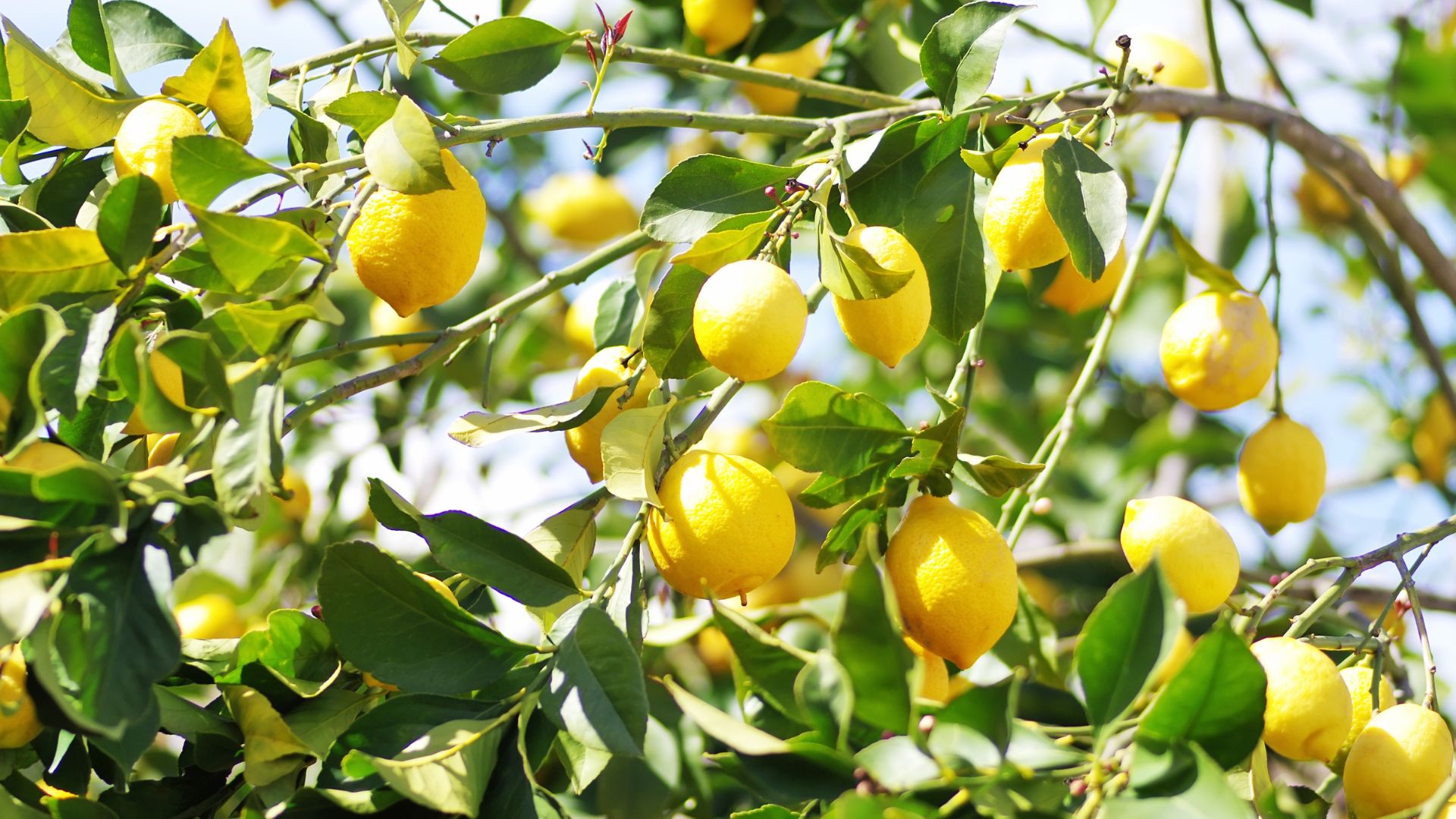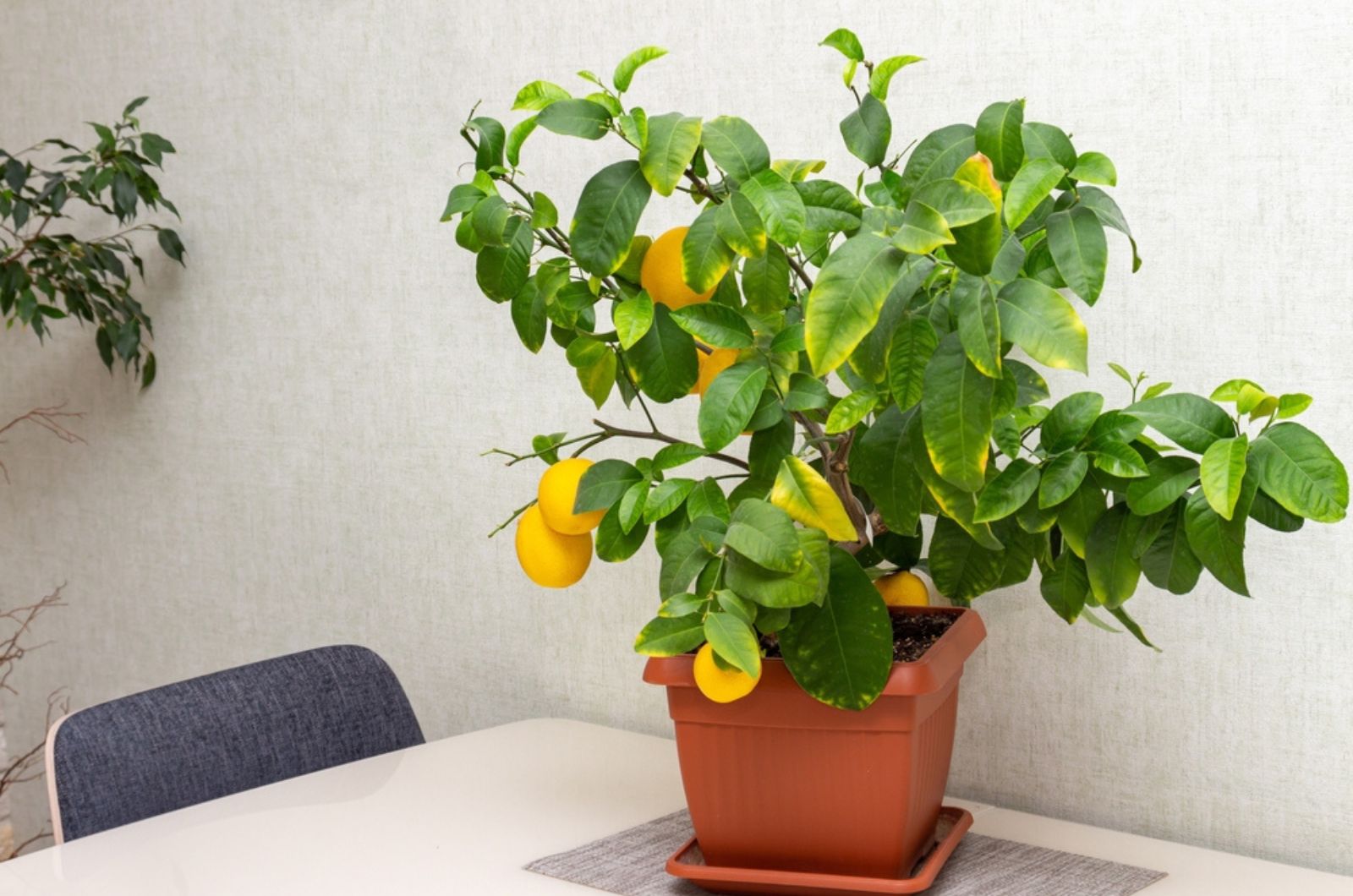The first time I noticed my lemon tree’s leaves turning yellow, I panicked (of course), thinking my poor tree was counting its last days. However, I still had my hope that everything would be fine (yellow doesn’t necessarily mean that something is dying, right?).
I figured my lemon tree needed some adjusting, and I just had to find out what was throwing it off. So, after some a bit of detective work, I concluded one thing: lemon trees sure know how to put on a show!
If they don’t have enough sunshine or they get a bit more water than they’d prefer, those green leaves will soon be looking like tiny lemons from afar (‘cause they turned yellow, get it?). But those are no lemons, and you’ll have to change the conditions so your tree can get back on track.
Among all of these issues, the most common one is…
Iron Deficiency
One thing I learned on this citrusy quest is that not all yellowing leaves (a.k.a. chlorosis) are due to iron deficiency, but there are some pretty obvious clues when iron is the culprit.
If your lemon tree’s leaves are starting to look a bit distorted, but those tiny veins running through them remain a rich, dark green. Aha! This is a classic sign that your tree is screaming: “I need more iron!”
If left unchecked, things can get pretty dramatic.
The leaves will drop off, the new growth will come in smaller and paler (they will look light yellow or even ivory), and the branches might start to die back, especially on the tops and sides of your tree.
Do not worry – iron supplements will reverse everything (honestly, they’ve nurtured my lemons back to life).
Related: Why Your Lemon Tree Leaves Curling And How To Fix Them
This Is How You Can Fix This Issue
You know, iron deficiency in lemon trees can cause you a headache (don’t ask me how I know this).
Even if the soil is rich in iron, factors like improper watering and soil alkalinity can mess with the tree’s ability to absorb this crucial nutrient (who would’ve thought).
The best way to tackle this issue is to be proactive: plant your lemon tree in slightly acidic, well-draining soil, and make sure it’s regularly watered and fertilized (luckily, I figured my soil was too alkaline in time!).
But what if your lemon tree is already showing those annoying signs of iron deficiency? Again, no worries because there are always solutions.
One quick fix is using foliar sprays with the necessary nutrients, though these are sometimes less effective for iron specifically.
The most reliable method is to add iron chelates directly to the soil. This form of iron is more easily absorbed by plants (especially in alkaline or heavily watered soils).
What I would also recommend is that you keep an eye on your tree’s drainage and watering habits to help prevent iron deficiency in the long run.
So, with a bit of care and the right approach, you can turn those yellow leaves green again and keep your lemon tree thriving. After all, a healthy tree means more juicy lemons for all your zesty recipes!
Also read: Propagate Your Lemon Tree Easily With This Brilliant Banana Hack No One Told You About


